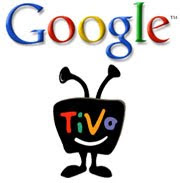YouTube is the world’s online video portal, but if a current patent application filed by Google is any indication, it may be looking to become an interactive gaming portal as well.
The patent, “Web-based System for production of Interactive Games Based on Digital Videos,” was filed by Google earlier this year but available this month. Uncovered by BNET, the Google patent seems to detail a system where the creation of video annotations can be used for gaming-like procedure and video behavior change.

The following is the complete abstract from the patent application:
“Systems and methods are provided for adding and displaying interactive annotations for existing online hosted videos. A graphical annotation interface allows the creation of annotations and association of the annotations with a video. Annotations may be of different types and have different functionality, such as altering the appearance and/or behavior of an existing video, e.g. by supplementing it with text, allowing linking to other videos or web pages, or pausing playback of the video. Authentication of a user desiring to perform annotation of a video may be performed in various manners, such as by checking a uniform resource locator (URL) against an existing list, checking a user identifier against an access list, and the like. As a result of authentication, a user is accorded the appropriate annotation abilities, such as full annotation, no annotation, or annotation restricted to a particular temporal or spatial portion of the video.”
While there are previously annotations within YouTube videos, they don’t have this type of functionality. With the behavior described in this patent, you could generate a game that jumps from video to video based on your responses or one that pauses the video and requires you to answer a question before resuming playback. It also has potential applications in advertising mechanics.
It’s difficult to tell just from the patent what Google intends to do with this technology, but the fact that the patent focuses on interactive games gives us our best clue. YouTube-based gaming may be in our not-so-distant future.








 Google has been acquiring about one or two firms almost every month recently, in order firm its standing in diverse verticals. With the news of more lined up, the question remains which one next?
Google has been acquiring about one or two firms almost every month recently, in order firm its standing in diverse verticals. With the news of more lined up, the question remains which one next?












 Speed Tracer is a
Speed Tracer is a 


























